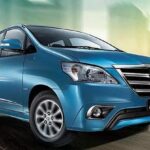The journey of Range Rover engines dates back to 1970 when the first Range Rover was released. At that time, the SUV was powered by a 3.5-liter V8 engine originally sourced from Buick. This engine became known for its durability and capability, setting the tone for future Range Rover engines. Over the decades, Range Rover engines have evolved in several directions:
- Larger Displacements for Enhanced Power: Starting with modest power outputs, Range Rover engines gradually grew in displacement and technology, resulting in powerful, performance-oriented options by the 1990s.
- Transition to Diesel Options: As fuel economy became more significant, Land Rover introduced diesel engines into the Range Rover lineup, providing an efficient yet powerful option for global markets.
- Modern Hybrid and Electrified Engines: Reflecting global trends towards sustainability, the modern Range Rover lineup now includes plug-in hybrid and fully electric powertrains, maintaining the Range Rover’s hallmark performance with a reduced environmental footprint.
Key Engines in Range Rover History
1. Buick-Sourced V8 (1970-1980s)
The first-generation Range Rover was powered by the Buick-derived 3.5-liter V8 engine. This aluminum block V8 was relatively lightweight and compact, allowing for a better power-to-weight ratio than many of its contemporaries. Producing around 135 horsepower, it may seem underwhelming by today’s standards, but it provided ample torque for off-road capabilities, a Range Rover hallmark.
- Specifications:
- Displacement: 3.5 L
- Power Output: 135 hp
- Torque: 200 lb-ft
- Impact: This engine set the foundation for Range Rover’s reputation as a capable and powerful off-road vehicle with a refined character, which was relatively unique among four-wheel-drive vehicles of its time.
2. 4.2-Liter V8 (1992-1996)
As demand grew for more power, Range Rover introduced the 4.2-liter V8 engine in the 1990s. This engine was a revised version of the original Buick V8, but with increased displacement and enhancements to boost output. This engine produced approximately 200 horsepower and 251 lb-ft of torque, a significant increase over its predecessor.
- Specifications:
- Displacement: 4.2 L
- Power Output: 200 hp
- Torque: 251 lb-ft
- Impact: This engine marked Range Rover’s transition from a rugged off-roader to a more luxurious SUV, meeting the demands of customers looking for power and refinement.
3. BMW-Sourced M62 V8 (2002-2005)
In the early 2000s, Land Rover was under the ownership of BMW, which led to the use of BMW engines in the Range Rover lineup. The 4.4-liter BMW M62 V8 engine was fitted into the third-generation Range Rover, bringing advanced engineering and reliability.
- Specifications:
- Displacement: 4.4 L
- Power Output: 282 hp
- Torque: 324 lb-ft
- Impact: The BMW M62 V8 introduced new levels of refinement and performance to Range Rover, bringing it closer to the luxury standards of competitors like Mercedes-Benz and Lexus.
4. Jaguar-Land Rover AJ-V8 (2005-Present)
When Ford acquired Land Rover, the Range Rover engines shifted to Ford’s Jaguar-Land Rover AJ-V8 engine series. The AJ-V8 engines have continued to evolve, becoming mainstays in the Range Rover lineup.
- AJ-V8 4.2 L Supercharged (2005-2009):
- Power Output: 400 hp
- Torque: 420 lb-ft
- AJ-V8 5.0 L Supercharged (2009-Present):
- Power Output: Up to 518 hp
- Torque: 461 lb-ft
These AJ-V8 engines are high-performance units that deliver smooth, powerful acceleration and a refined driving experience. They utilize supercharging to boost power without the need for a large increase in displacement.
5. Ingenium Engine Family (2015-Present)
Land Rover introduced its Ingenium engine family in 2015, marking a shift towards more efficient, lower-displacement turbocharged engines. These engines, available in both gasoline and diesel variants, offer a balance between performance and fuel economy.
- Ingenium 2.0 L PHEV (Plug-in Hybrid Electric Vehicle):
- Power Output: 398 hp (combined with electric motor)
- Range: 19-30 miles on electric power alone
The Ingenium family represents Land Rover’s commitment to sustainability while retaining the power and luxury expected in a Range Rover.
Advanced Technologies in Range Rover Engines
To deliver both performance and efficiency, Range Rover engines incorporate advanced technologies:
- Supercharging and Turbocharging: The AJ-V8 and Ingenium engines use forced induction for enhanced power output, particularly in the supercharged versions of the V8.
- Direct Fuel Injection: Many Range Rover engines, including the Ingenium and later AJ-V8 versions, feature direct fuel injection for precise fuel delivery, resulting in better efficiency and lower emissions.
- Hybrid and Electric Drive: The Ingenium PHEV system integrates an electric motor with a turbocharged engine, allowing for a combined power output of nearly 400 hp and offering a modest all-electric range.
- Aluminum Block and Head Construction: Most Range Rover engines use aluminum in the engine block and heads, reducing weight and improving fuel economy without sacrificing strength.
Performance and Driving Experience
Off-Road Capabilities
Despite their luxury trappings, Range Rovers are designed to tackle off-road conditions with ease. The engine’s torque characteristics are essential in providing the low-end grunt needed for rock crawling and mud driving. The Ingenium engines, with their turbocharged and hybrid options, are designed to provide torque instantly, essential for off-road agility.
On-Road Comfort
The AJ-V8 and Ingenium engines have contributed significantly to Range Rover’s reputation as a smooth, high-performance luxury vehicle on paved roads. The combination of powerful acceleration, smooth shifts (thanks to ZF automatic transmissions), and engine refinement has made Range Rovers highly respected in the luxury SUV segment.
Future of Range Rover Engines: Electric and Beyond
With the automotive industry shifting towards full electrification, Land Rover has announced that it plans to make the Range Rover lineup fully electric by the 2030s. The electric Range Rover will retain the brand’s luxury and performance ethos, with electric motors providing instant torque and a quiet driving experience.
- Anticipated Specifications:
- Power Output: Estimated 500-700 hp
- Range: 300+ miles per charge
- Zero Emissions
The electric motors will maintain the Range Rover’s off-road prowess, with independent control over each wheel, allowing for unparalleled traction and agility.
Conclusion
From its beginnings with a Buick-sourced V8 to



